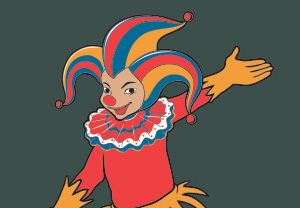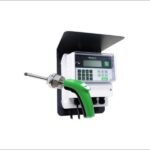Rohit Verma , a software engineer, has to drive around 25 kms every day to reach office. Commuting between home and office oppresses him. Besides, Delhi’s dirty, polluted air is driving him nuts. Fed up with work pressure and city life, he decides to go to the mountains and never return. |

If I breathe this polluted air for one more day, my lungs would burst. I’ve had enough of honking cars and traffic snarls. We are burning away our resources. Worst of all, they burn crop residues after every harvest season. We just want to take; we don’t want to give. Bye, dirty, unhealthy, selfish world. I am going to the mountains.
Rohit Verma

Rohit camps on one of the lower slopes of a mountain. At night, he is woken up by the loud vibrating sound from a conch shell. |

Who are you? Where are you from? And what are you doing here?

Günter Schmid

My name is Günter Schmid. I‛m from Frankfurt, Germany. A couple of years ago, I resigned from a company called V4V GmbH & Co. I came here in search of peace of mind.
Both sit inside the tent and have tea. |

What ails thee, young man? I see harsh lines on your face.
I am stressed out. Our planet is dying a slow death. They don‛t care for the only earth we have. And that sickens me. The world is losing its precious resources, and we don‛t know how to avoid unnecessary waste.


So, you want to live in a clean, sustainable world, isn‛t it?
Tell me, how can I turn our planet into a sustainable world?


Two of my friends, who are living repositories of knowledge, should have the answer to your question. I will call them.
Günter Schmid blows the conch shell three times. |


Mu ha ha ha! Why have you called us in the middle of the night? What do you want to know?
My friend, Rohit, wants to know how we can turn our planet into a sustainable world.


Mu ha ha ha! It‛s very simple. Let me start off by introducing myself. My name is Circularity. I am also known as the circular economy. Isn‛t that intriguing?
Yes, it is. What‛s so special about you?


The circular economy is an economic system. This system is aimed at minimizing waste and making the most of resources. In a circular system, resource input and waste, emission and energy leakage are minimized by slowing, closing and narrowing energy and material loops. This can be achieved through long-lasting design, maintenance, repair, reuse, remanufacturing, refurbishing and recycling. This regenerative approach stands in contrast to the traditional linear economy, which has a take-make-dispose model of production.


I see
Proponents of the circular economy suggest that a sustainable world does not mean a decline in the quality of life for consumers; it can be achieved without loss of revenue or extra costs for manufacturers. The argument is that circular business models can be as profitable as linear models, allowing us to keep enjoying similar products and services. Although the circular economy is still in an early stage, it has huge potential and is crucial for a sustainable world. Are you following me?


Yes, I am.
Two cycles exist in the circular economy: the technical and the biological. Almost all attention goes to the technical cycle, which is characterized by the words share, maintain, reuse, remanufacture and recycle. The object of these actions is to maintain the economic value of products, materials and resources as long as possible; and in doing so, use resources to the maximum and reduce the amount of waste to a minimum.

The main biological cycle, on the other hand, runs through degradation of agricultural side streams, providing the mineral and biological resources for new agricultural production. But in reality, the majority of bio-based products enters the technical cycle and only a small share enters the biological cycle… biodegradation; for example, paper and pulp and bio-based chemicals and plastics.


Hmm. That‛s interesting.
I have something more interesting to tell you.


Who are you?
My name is Bioeconomy. Let me tell you why I am so special. The bioeconomy is a sustainable economic system. It is based on the use of renewable raw materials rather than fossil raw materials and bio-based innovations. Its aim is therefore not only to replace fossil raw materials, but also to develop completely new products and processes. In achieving this aim, it contributes to and creates the conditions for a closed circular economy.

A new model for industry and the economy, the bioeconomy involves the process of using renewable biological resources sustainably to produce food, energy and industrial goods. It also exploits the untapped potential stored in tonnes of biological waste and residual materials.


I see.
The transition from a fossil fuel-based to a bio-based economy is expected to reduce our dependency on fossil fuels and achieve more sustainability and contribute to climate and environmental protection. The Baden-Württemberg government is working towards establishing a regional bioeconomy. The bioeconomy involves breaking up plants into their component parts as completely as possible and converting them into valuable materials. It is expected that this challenge will be met in the future by large bio-refineries with many coordinated process steps.


That‛s really very interesting.
In recent years, the bioeconomy has also become a key focus of political and technological interest both nationally and internationally. In 2010, the German government adopted the “National Research Strategy BioEconomy 2030” and in a press statement released in February 2012, the European Commission stated: “Europe needs to make the transition to a post-petroleum economy. Greater use of renewable resources is no longer just an option, it is a necessity.” In its current EU research programs, Horizon 2020, the European Commission places bioeconomy at the heart of its investment programs.



Günter, are these jesters twins?
They are not twins, but there are a few striking similarities between the two. Both the bioeconomy and circular economy aim to create a more sustainable and resource-efficient world with a low carbon footprint. Both avoid using additional fossil carbon to contribute to climate targets. The circular economy strengthens the resource efficiency of processes and the use of recycled materials to reduce the use of additional fossil carbon – either embedded in the material or emitted during manufacturing or extraction processes. Bioeconomy substitutes fossil carbon by renewable carbon from biomass from agriculture, forestry and marine environment, including by-products and wastes.


How do they differ from each other?
The bioeconomy and circular economy differ in a variety of aspects. Most of the material flows, such as fossil, biomass, metals and minerals are not part of the circular economy. A big proportion of metals and minerals are not maintained in the economy, but lost in the environment or in landfills. Fossil- or bio-based products often end up in landfills or the environment, so they are also lost to the circular economy. Also, some sectors of bioeconomy can never be fully part of the circular economy. The impossibility for re-use or recycling is inherent in several applications; for example, energy and fuels are the “dead ends” of carbon utilization, at least under the current conditions of circular economy – with CO2 utilization absent.


OK
Also, most detergents, cosmetics, coating and paints cannot be collected and recycled. For some of these applications, biodegradable solutions could be part of organic recycling in the future. Besides, circular economy only focuses on maintaining the value of products, materials and resources in the economy for as long as possible whereas many of the bioeconomy‛s elements go beyond this objective.


So, the show is over, isn‛t it?
No. The show has just begun. Let‛s see what happens when we combine the two concepts – circular economy and bioeconomy. When we combine these concepts, we arrive at a new concept – the circular bioeconomy. Although the concepts of bioeconomy and circular economy have similar targets and are overlapping to a great extent, neither is fully part of the other nor embedded in the other. Bioeconomy must not be mistaken for merely a part of the circular economy, which does not include certain crucial aspects of the bioeconomy.


Get the rings and give him an idea of the things that circular bioeconomy includes.
The jesters hold the rings aloft in such a way that the two halves of the rings overlap each other. |


The circular bioeconomy includes products that are bio-based, sharing and using manufacturing and recycling, cascading use, effective utilization of organic waste streams, value chains that are resource-efficient, and organic recycling and nutrient cycling.
What is cascading use?


Cascading use of biomass resources – wood and agricultural products – means an efficient use of these resources from the perspective of natural resource, material and land consumption. The cascading use principle gives priority to higher value uses that allow the reuse and recycling of products and raw materials. It promotes energy use only when other options are not available. It prioritizes material use of biomass before energy use since burning implies the raw material being lost. In addition, it prioritizes energy production combined with co-products such as compost or nutrients over energy productions only. From the perspective of the circular economy, burning and incineration can be regarded as leakage of raw material.
According to Michael Carus, Managing Director, nova-Institute GmbH, biomass flows are part of the circular economy, but the concept of bioeconomy is much more than what the circular economy can cover. He says that “the circular economy is not complete without bioeconomy and vice versa. The huge volumes of organic side and waste streams from agriculture, forestry, fishery, food & feed and organic process waste can only be integrated in the circular economy through bioeconomy processes, while the bioeconomy will hugely profit from increased circularity. The circular bioeconomy, the combination of the two, will result in a much better utilization of bio-based side streams, and eventually in linking different industrial sectors, like the food and chemical industries – not foreseen in the circular economy, but a major opportunity.”


Günter, since I have visited my uncle‛s small paper mill in Chennai several times, I know a little bit about how paper is manufactured. Hence the following question: Are Europe‛s forest fiber and paper industries heading towards a circular bioeconomy? You should find it easy to answer this question as you are from a European country.
The circular bioeconomy is still in an early stage. Europe‛s forest fiber and paper industries are heading towards a circular bioeconomy, mainly because paper is the only leading material that is both renewable and recyclable. These industries are in the best position to play a crucial role in the development of a European circular bioeconomy; and European Union policies have a crucial role in fostering this development.

Let me take this opportunity to tell you that the industry‛s path to reduce greenhouse gas emissions by 80% while creating 50% more added-value was first outlined in 2011 in the European paper industry‛s momentous “2050 Roadmap to a low-carbon bioeconomy”. Confederation of European Paper Industries, the European association representing the forest fiber and paper industry, has relentlessly explored ways for the industry to reduce its emissions and add value to its materials, products and processes. Substantial progress has been made over the past five years on research, innovation and investments. The industry has already reduced its total – direct and indirect – greenhouse gas emissions by 44% per tonne of product since 1990.

The European paper industry recently launched the revised version of its 2050 Roadmap detailing the pathways and investment needed to cut its carbon emissions by 80% while creating 50% more added-value. The Roadmap projects the need for €44 billion more investment – a 40% increase on current levels – to transform industry in Europe and usher in the low-carbon bioeconomy by 2050. It should be noted that since 2010, the forest fiber and paper industry has invested on average about €3.5 billion per year in tangible capital goods in Europe. However, a combined effort to decarbonize and make the sector grow will require significant additional investment, much beyond the existing levels.


Welcome to the new world!



